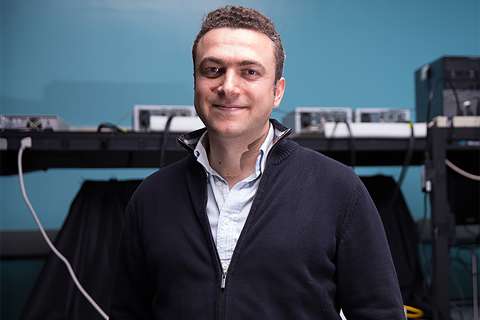Results of a phase 3 clinical trial by researchers at UCLA’s Jonsson Comprehensive Cancer Center found that women with HER2-positive breast cancer had significantly better response rates, but more severe side effects, when they were treated with traditional neoadjuvant chemotherapy along with dual HER2-targeted blockade (docetaxel, carboplatin, and trastuzumab plus pertuzumab), compared to a more novel approach using HER2-targeted chemotherapy plus HER2-targeted blockade (trastuzumab emtansine plus pertuzumab). In spite of the lower chance of response to therapy prior to surgery, the risk of recurrence 3 years after surgery was similar for patients in both treatment arms.
BACKGROUND
About 20 percent of women diagnosed with breast cancer have the HER2-positive subtype, which roughly accounts to 200,000 to 250,000 women worldwide. Prior to the development of trastuzumab, this group of women had the worst prognosis. Now that trastuzumab is available, women diagnosed with this type of breast cancer have among the best prognoses, some even being cured of the disease. Despite the improvements in survival for women with this cancer, many end up becoming resistant to treatment. Approximately 15 percent of patients who receive treatment for their early (curable) breast cancer will have cancer relapse or will die within three to five years. The need to improve outcomes and safety among these patients led researchers to test new, targeted treatment strategies in place of traditional chemotherapy.
METHOD
The KRISTINE trial included 444 patients from 68 centers in 10 different countries who were diagnosed with early stage HER2-positive breast cancer. Women were randomly placed into two groups. One group of women (223) received trastuzumab emtansine plus pertuzumab and the other group (221) received docetaxel, carboplatin, and trastuzumab plus pertuzumab (“TCHP”).
The initial analysis, published in 2018, showed the women assigned to the traditional neoadjuvant chemotherapy regimen had a 55.7 percent pathologic complete response, meaning there were no signs of cancer in the breast or lymph nodes after treatment. Women who received HER2-targeted chemotherapy plus HER2-targeted blockade had a 44.4 percent pathologic complete response. The three-year outcomes data demonstrated that women who were in the trastuzumab-emtansine/pertuzumab arm had a higher risk of their disease growing prior to surgery (6.7 percent) than patients in the standard arm (0 percent). However, after surgery, the rates of disease recurrence or death were similar for the two treatment arms (7 percent for trastuzumab-emtansine/pertuzumab; 8 percent for TCHP).
IMPACT
The study suggests that the use of HER-2 blockade with traditional chemotherapy remains the standard treatment approach for women with HER2-positive early breast cancer. However, new strategies are still needed to help prevent recurrence and improve toxicity levels of chemotherapy.
AUTHORS
The study’s lead author is Dr. Sara Hurvitz, director of the Breast Cancer Clinical Research Program at the UCLA Jonsson Comprehensive Cancer Center. The senior author is Dr. Dennis Slamon, director of clinical and translational research at the UCLA Jonsson Comprehensive Cancer Center. Other authors are listed in the journal article.
JOURNAL
The study was featured at the 2019 American Society of Clinical Oncology Annual Meeting and published in the Journal of Clinical Oncology.
FUNDING
This study received funding from F. Hoffman-La Roche/Genetech, Inc.



